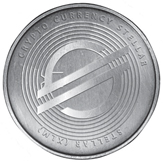Stellar is an open-source network optimized for payments and asset issuance. On Stellar, a person can create, send, and trade digital representations of all forms of value — U.S. dollars, Argentine pesos, Bitcoin, real estate, pretty much anything.
Stellar uses blockchain technology to allow users to transfer funds quickly and at a very low cost. The payment network does not show preference to any national currency; instead, the network has its own native cryptocurrency, Stellar Lumens.
Although many types of cryptocurrencies are intended to replace current financial systems, that isn’t the case with Stellar. It’s designed to enhance the world’s financial systems by providing a single network where they can all work together.
How Stellar is used
For individuals, there are a couple of ways to use Stellar. Stellar apps and third-party services acting as network anchors give users an easy way to transfer funds to someone else, no matter where they live. You can also use it to purchase digital versions of different currencies — a valuable option for people in countries that don’t have a strong national currency and want to use another currency for their savings.
Stellar Consensus
The Stellar Consensus Protocol (SCP), a model suitable for worldwide consensus. SCP is the first provably safe consensus mechanism that simultaneously enjoys four key properties: decentralized control, low latency, flexible trust, and asymptotic security.
SCP is a construction for federated Byzantine Agreement (FBA), a new approach to consensus. FBA brings open membership and decentralized control to Byzantine agreement. The key difference between a Byzantine agreement system and a federated Byzantine agreement system (FBAS) is that in FBA each node chooses its own quorum slices. The system-wide quorums result from these decisions by individual nodes.
Stellar Anchors
Another important network function is performed by Stellar Anchors (originally called
Gateways). These entities accept deposits of currencies and assets, and issue new representations of these assets on Stellar. Anchors then establish the requirements Stellar users need to meet to hold the assets. They can also revoke user access to assets.
Anchors represent trusted entities that can be in charge of peoples’ deposits and hand out credits into the blockchain. The anchors function as the bridge between different digital assets and the Stellar blockchain.
 How Stellar Works
How Stellar Works
Stellar has a ledger that it uses to track ownership of all the accounts and crypto tokens on its network. It maintains the ledger and processes transactions with its own unique algorithm, the Stellar Consensus Protocol.
The Stellar ledger stores every account’s balances and operations (what they want to do with their funds). For example, an account could have a balance of 1,000 XLM and 100 U.S. dollar tokens and a pending operation to send 100 XLM to another account.
All balances and operations are broadcast to the entire network every five seconds. Transactions are validated by computers that run the core Stellar software, which are called nodes. For each pending transaction, the nodes verify that the correct amount is transferred.
“There are nodes around the world, and anyone can make their computer a node by installing the Stellar software. Their computer will then become part of the consensus process.”
With the system it has set up, Stellar is able to process transactions within five seconds. The transaction fee is 0.00001 XLM — a small fraction of a penny at today’s prices. (The fee can rise when network activity is high, but it will still be quite cheap.)
Assets on Stellar
Accounts on the Stellar network can be used to track, hold, and transfer any type of asset. Assets can represent many things: cryptocurrencies (such as bitcoin or ether), fiat currencies (such as dollars or pesos), other tokens of value (such as NFTs), pool shares, or even bonds and equity.
Assets on Stellar have two identifying characteristics: the asset code and the issuer. Since more than one organization can issue a credit representing the same asset, asset codes often overlap (for example, multiple companies offer a USD token on Stellar). Assets are uniquely identified by the combination of their asset code and issuer.
Stellar Token
The Stellar token is called Lumen (XLM). The use cases of Lumens are as follows:
- An intermediary bridge currency for cross-border payments.
- Tokenisation of assets
- Payment of network fees
Conclusion
Stellar as a network is an open-source tool, and therefore the program’s source code can be modified by developers. Due to its open-source nature, the activities on Stellar should be reviewed at a user level as opposed to a platform level. At present, the Stellar platform can facilitate any type of transaction, compliant or otherwise. Therefore, a Sharia governance framework cannot be applied to Stellar as a platform, rather guidance and governance can be given to developers looking to use the platform.
Using Stellar to tokenise Sharia non-compliant assets or executing any Sharia non-compliant transactions on Stellar will be deemed as a breach of Sharia guidelines and hence make them non-compliant. Similarly, will be the case if Lumens are deployed to tokenise non-compliant assets.
Based on and subject to the foregoing information, and for the purposes of this conclusion, nothing has come to our attention that causes us to believe that Lumens are in breach of Sharia* principles and rulings as adopted by the scholars conducting this research.
*Attention is drawn to the term ‘Sharia’ and ‘Sharia compliant’ and its interpretation thereof as expressed in the following link https://shariyah.net/glossary/



